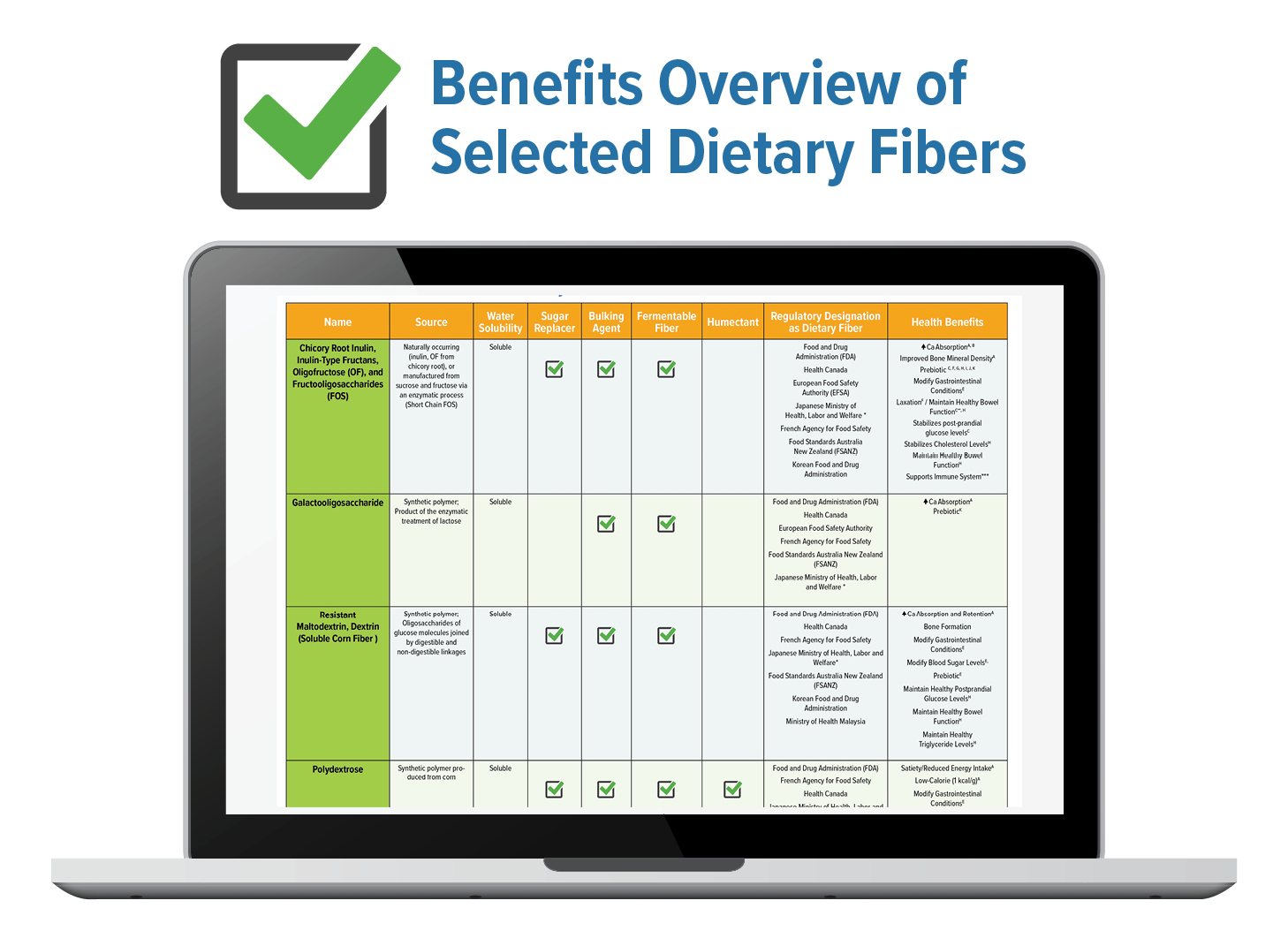Though early science has highlighted the relationship between fiber and health outcomes, the designation of dietary fiber as a nutrient of public health concern in the 2015 Dietary Guidelines for Americans has prompted healthcare professionals to include more fiber rich foods in their recommendations to patients and clients. As consumers hear more and more about the “fiber gap”, the discrepancy between the recommended daily intake and the amount typically consumed on average per day, they are searching for more sources of fiber and more creative ways to incorporate fiber into their diet. Food and beverage manufacturers are answering the call and are introducing innovative products to improve public health and help consumers meet their fiber intake goals.
In the United States, the U.S. Food and Drug Administration (FDA) has spent considerable time and resources defining dietary fiber and researching the beneficial physiological effects of non-digestible carbohydrates that meet this definition. FDA’s February 2018 guidance and scientific review, which confirmed an initial list of approved dietary fibers, and subsequent June 2018 approval of eight additional non-digestible carbohydrates that meet its definition, provide food scientists and technologists more options for fortifying their products than ever before. The FDA’s decisions were based on careful review of the scientific evidence supporting the claim of beneficial physiological effects of these ingredients and this new guidance allows these fibers to be counted in the calculation of total fiber per serving for declaration on the Nutrition Fact label, as well as the Supplement Facts label.
In addition to the U.S., dietary fiber is defined and permitted by national authorities around the world. References and research from global health organizations and professional societies, as well as updates from regulatory authorities, are provided below. General information on the various types of dietary fiber, their uses and formulation trends are also provided. Browse these resources and stay abreast of the latest advances related to dietary fiber.



